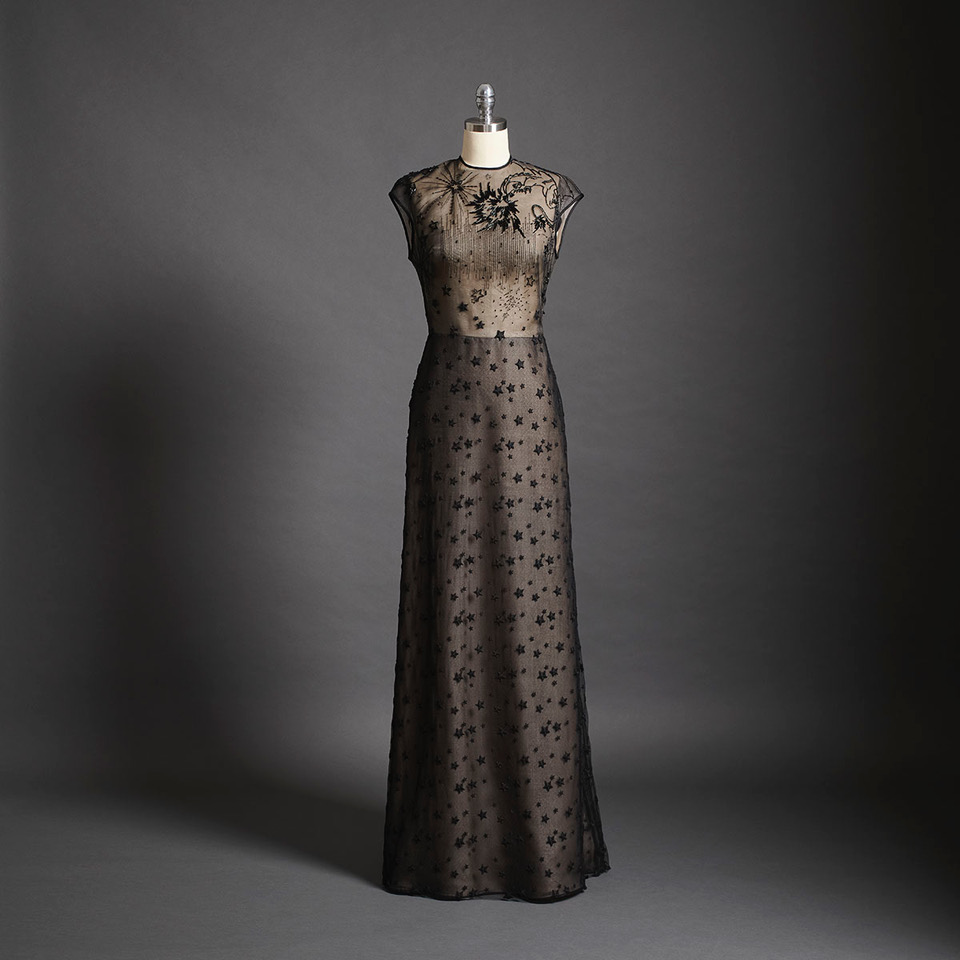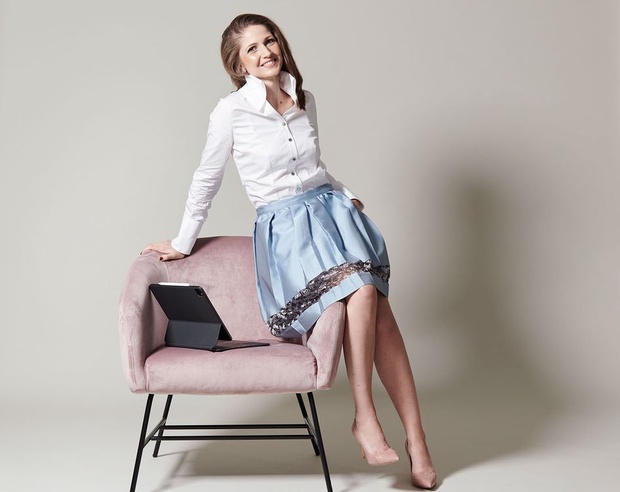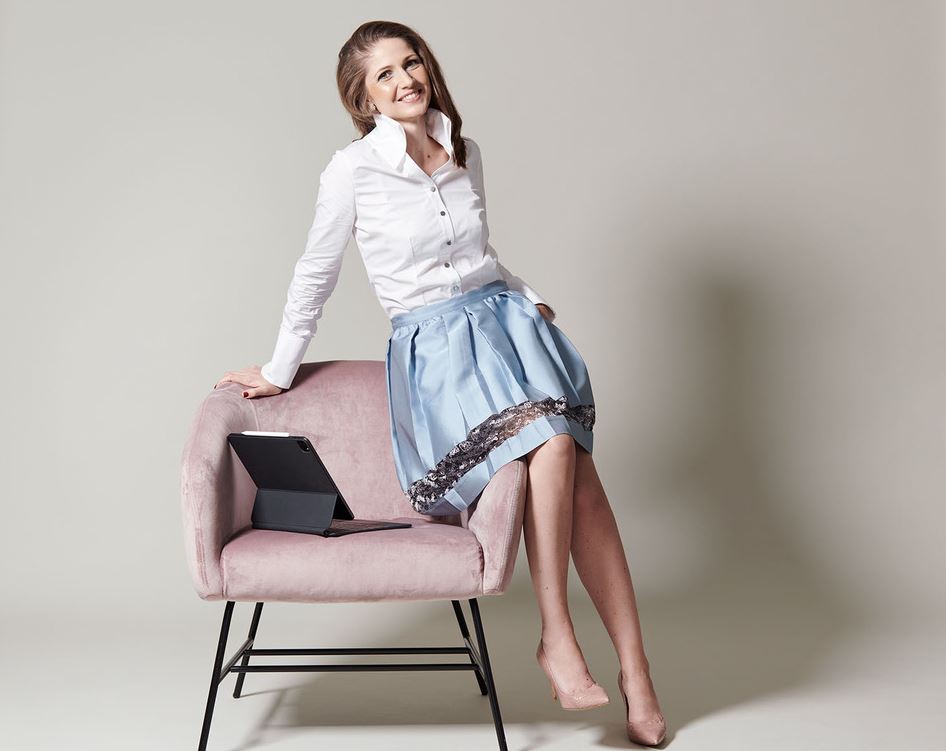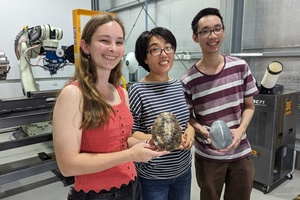This is because Paris is very renowned for its métiers d’art and their savoir faire (know how).
The creative genius of French art craftsmen shines during the reign of Louis XIV, who, thanks to his royal orders and taste for beautiful things, brought an unprecedented dimension to these trades.
Versailles itself became the centre of the world, and deeply admired by all European neighbours.
Fashion was one arena that dazzled during this period, with dentellières (lacemakers) to plumassiers (feather artisans), and brodeuses (embroiderers) to name a few, taking clothing to a new level.
But I also wanted to extend this topic by exploring the impact of fashion on environment so my students could think in greater depth.
And then I discovered Delphine Genin, a French designer based in Melbourne, who I invited to speak with my class.
Having arrived ten years ago in Australia, Delphine was the first French designer to open an haute couture salon in Melbourne, before COVID hit. She has now a virtual atelier.
After ten years as a financial director, she chose to pursue her life dream and create her own company.
Passionate about textiles, creativity, and fashion, she was thrilled to work with traditional and new materials such as wood, plastic, or the more challenging fish skin (la peau de poisson).
Today, fish leather is gaining popularity as a fashion material due to its unique texture and appearance, especially for shoes, wallets, and bags (maroquinerie). Delphine also uses the technique of lacets, (cordon militaire), which harks from the Napoleon era.
My students learnt that you can always try new things in your life. For example, Delphine was the first person in Australia (and probably world wide) to teach the art of embroidery online during COVID.
My students also discovered that she was trained at the prestigious Ecole Lesage, one of the world’s greatest artistic embroidery houses.

One of my students asked: What is your favourite material?
Delphine said she likes delicate fabrics but also others which are not so classical.
It was interesting to let students explore the less glamorous side of fashion with our guest.
“Que pensez-vous de la fast fashion?” asked one of my students.
Delphine’s answer was very clear: “I don’t like the current system of production, sale and self-image. From statistics, a piece of clothing is worn 7 to 15 times, which is very little.
“Instead of buying all the time new things, we can accessorise our clothes for different occasions. For example, we can turn a simple T-shirt with a nice lace collar [into a glamourous item] for the night.
“So, instead of buying an outfit for each special occasion, we could buy a limited number of clothes and make multiple combinations, and make our clothing interchangeable, modulable.”
“Mais avez-vous un vêtement préféré?” asked another student.
Delphine does not have a favourite piece of clothing but said that a garment reflects yourself, is a mode of expression, and not something to be judgemental of or which makes you feel bad.
My students discovered that you can be attached to an outfit because it has been worn on a special and happy occasion, so it becomes synonymous with positive feelings.
“Quelles sont les différences entre la mode française et la mode australienne?” asked another student.
“French fashion is more classic and related to French history. Australian fashion is more extravagant, audacious,” Delphine responded.
During the discussion my students learnt more about the process of creation and how it takes time and passion.
“How much time does it take to create a dress?” a student posed.
“I first do a drawing of the dress then I make ‘la toile’ (a 3D representation of it) and finally I create the dress with the final fabric.
“For a couture dress, 2-8 months of work are necessary (20 to 30 hours on a dress and between 80 to 120 hours of embroidery), and 3-5 dress fittings with the client.
“For a prêt a porter (ready to wear) garment, of course, it will be less hours.”
Most importantly, the Delphine’s message was a very positive one for my students: it’s high time to change the stigmatisation we place on bodies.
“On est tous différent et unique.”
When I asked my students the most important thing they remembered about the interview with Delphine, it was: ‘follow your passion’.
I plan to finish this topic with the French film Haute couture.
Inspiring young people must come first. Using culture is unbeatable. Language is only the vehicle.














